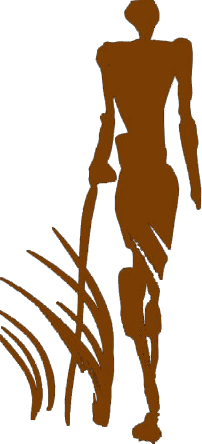As I look out now, the herd of impala busies itself around a small waterhole. Tails flick in the hot sunshine and the territorial male licks the air, testing the scent of the anticipated offspring, a few weeks from due, in the belly of his pregnant females.
I am watching them closely, trying to interpret their graceful and spritely demeanour. Looking for signs of nostalgia, I question whether they carry any memory of the startling scene that faced them in the early hours of morning. The sight, in the half light of dawn, of deadly beauty, the feared coat, as it sprung from the grass, like black magic, centimetres away from any one of them… the chaos… the smell of the cats fur… the family member taken by the neck and thrown to the ground with ferocious power… her world down with a thud; the upside down view of her tightly crowded herd, snorting urgent alarm calls in her direction, too late for her, not for them; her black, liquid eyes, wide with surprise, fear and then finally resignation, surrender and trust. Death.
Can they really remember the startling scene and yet now, so soon, so nearby, continue life with complete acceptance of their daily circumstance? Whose mother was she, whose child, friend? No sooner than I have asked the question, the dominant male and two females look up simultaneously and cast their vigilant, and perhaps reminiscent, gaze back in that direction. Survival.
We were around the fire, warming our comfortable world with a pre-dawn cup of coffee, when the intensity of the herds alarm calls pierced the stillness. We set off on foot immediately and as we walked, vervet monkeys joined in the warning, chattering loudly of a predator in the area.
Up on the bank of the dry stream, alongside a patch of medium length grasses, we located a female impala that had been living her life only ten minutes prior. Her head was at rest. One eye lay attached to the sand; the other, still glistening, was frozen in thought, and looked up, past the tall trees, and to the sky. Her liver and intestines were spread about and a few chunks of her bright red rump was devoured on the upper side. There was no predator in sight.
It was clear from the pattern of feeding that this was the shady artistry of a leopard. Somewhere, from within the combretum bushes… or perhaps the small patch of knee high grass in front of us… was a pair of watchful eyes, silently present and observing our behaviour. We scanned the area mindfully. The air was still; there was no sway or movement, though birds continued about their morning ways. We stepped forward to look for tracks and then, as if like liquid, she emerged from the grass, not five meters in front of us and fled - disappearing into the thicket.
During that day we would see three leopards, and find a half eaten Reedbuck kill of a forth. All across the nine-thousand square kilometre South Luangwa National Park, countless impala flicked their tails and vigilantly cocked their heads before drinking water, and leopards lay in the shade of combretum bushes, in wait of the moonless night.

